Estimated Read Time: 18 minutes
Can we save every species?
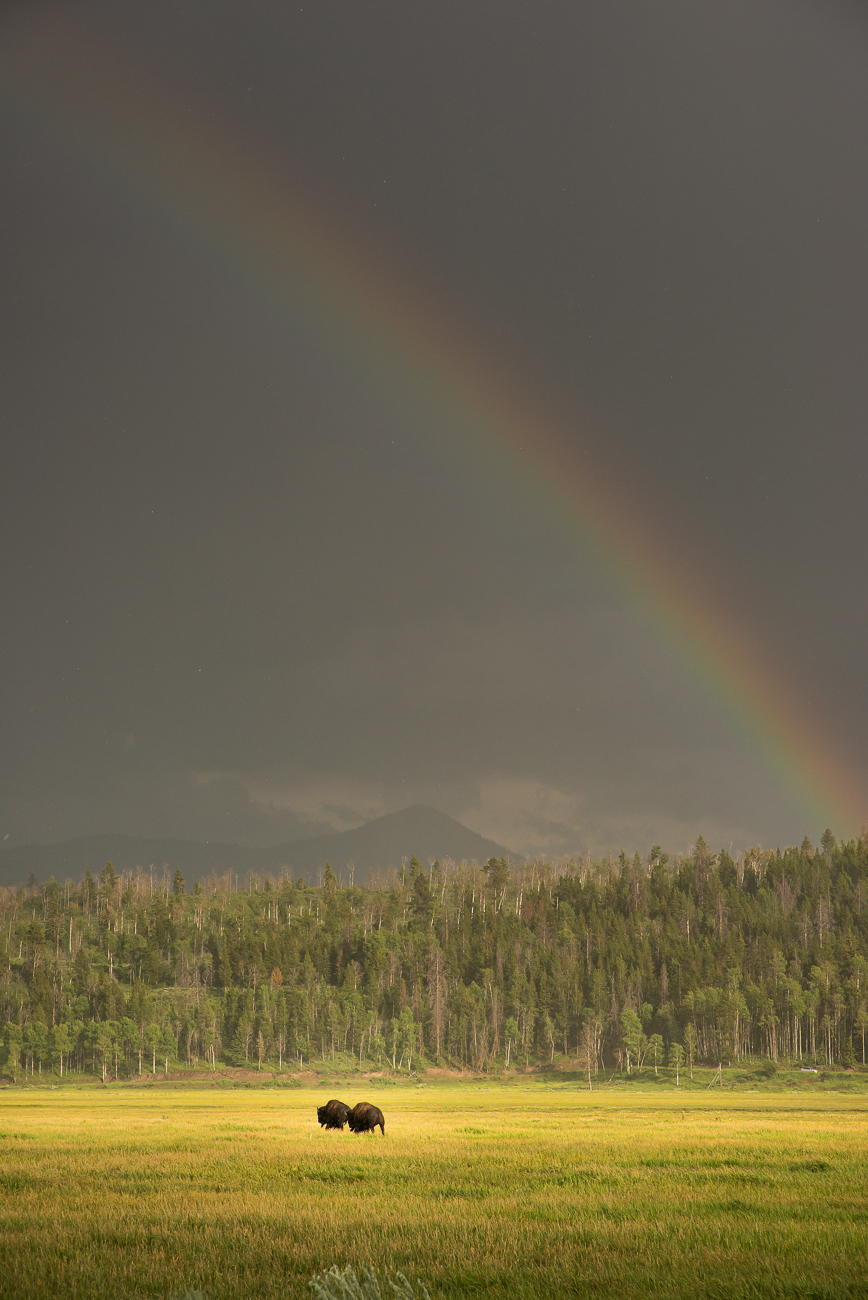
“Who’s the superstar on the Edmonton Oilers? Connor McDavid.
“Who’s the superstar over with the Los Angeles Lakers? LeBron James.
“You have these superstars and usually the team is built around this superstar. And if for some reason or other, that superstar, for instance, gets injured and is not playing? Something big will be missing. Because the other players are used to either setting up the superstar to score, or they get set up by the superstar and – hey – that superstar is not there. So, in other words, a team is just not the same without that superstar.
“Well, when we come to the bison – the buffalo – we refer to it not as a superstar, but we could use that lingo. We refer to it as a keystone species.”
Once upon a time, the sound of thunder wasn’t an approaching storm, but the hooves of bison on the run.
In Mount Robson, bison grazed over the continental divide from Jasper, and in the valleys that fed the Columbia and Fraser rivers.
But they aren’t here anymore.
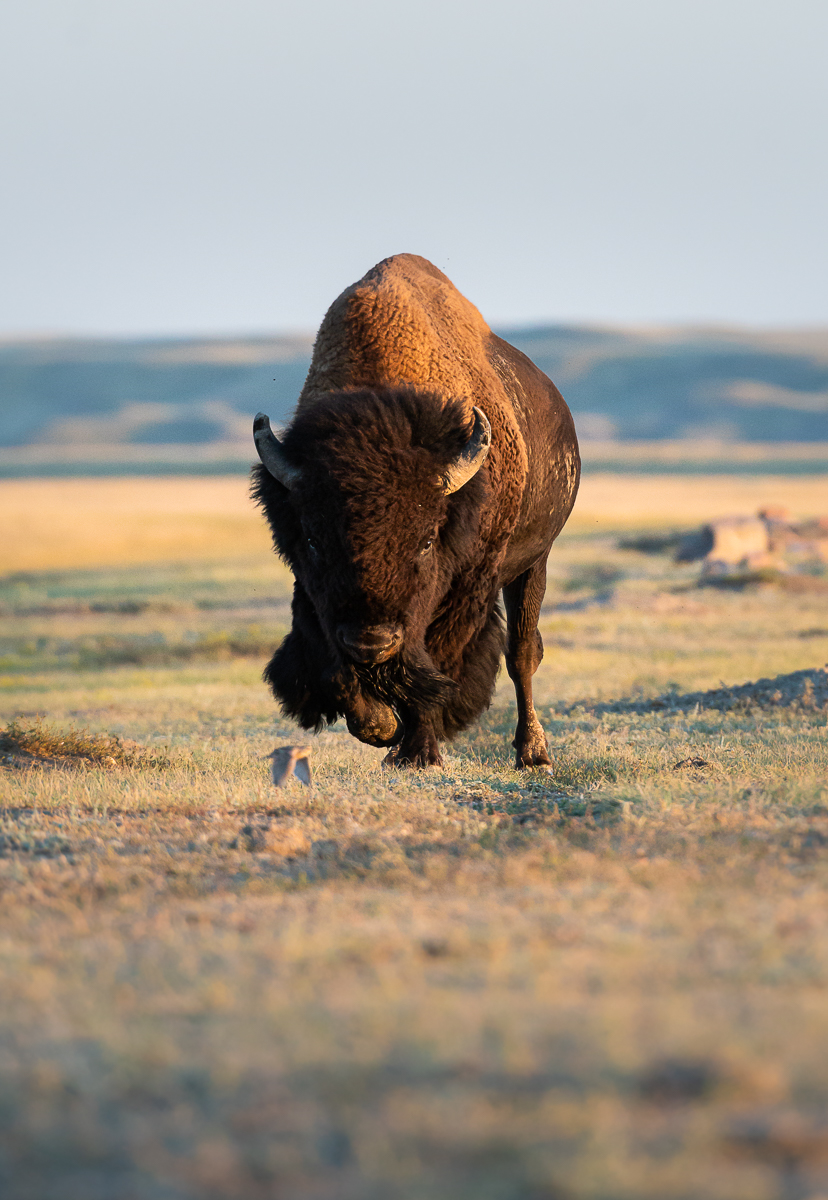 Bison were amongst the most common animals across North America. And then settlers arrived.
Bison were amongst the most common animals across North America. And then settlers arrived.
From tens of millions, bison declined to a few hundred animals. With the bison went natural systems, yes, but also cultures and peoples who had coexisted with the bison, and depended on them for survival.
Put more simply, Dr. Leroy Little Bear says the bison is “a keystone in terms of being a superstar with regards to culture.”
Leroy knows. He’s an advocate, educator and global leader on Indigenous rights, having helped spark the United Nations Declaration on the Rights of Indigenous Peoples.
“We can have all the rights we want, let’s say about hunting, but if there’s no animals to hunt, then what good is it?”
Even though the bison have been removed from the Mount Robson ecosystem, this place doesn’t just endure, it thrives. It’s a testament to the resiliency of nature and the wonders of the fail-safes it has in place for when some of its residents disappear before their time.
But across much of North America, bison were the ecological fail-safe. Without this massive ungulate wandering the landscape, the consequences for nature were dramatic, Leroy explains.
“When it’s not there, a whole bunch of things start to happen with regards to the environment.”
The consequence of losing the bison, of course, wasn’t just limited to the environment. As Leroy laments, “without it, I’m just a little bit less Blackfoot.”
And unless you’ve experienced loss – real, true cultural loss – it’s hard to really fathom what the loss of the bison – the buffalo – meant to Leroy and his people.
“Being a little bit less Blackfoot with its absence? It would be similar to Christians. In our modern world, for instance, we have sacred Christian places we go to. What if all of a sudden, the Vatican was no more, say?”
Leroy says, “you could still have all the church beliefs, you could still have all the Christian beliefs, you could still practice them, but without that kind of iconic symbol out there, there’s something missing. If the churches were taken away, or all closed down, you could still have all the beliefs, but they’d be just a little bit less Christian.”
Biodiversity guru Dr. Harvey Locke understands Leroy’s metaphor. He says “bison were treated much differently than all other wildlife for historical reasons: Relating to replacing them with cattle because they were seen as competition; relating to controlling Indigenous peoples and removing their ability to be completely free on the landscape; and relating to the fact they were so close to extinction, they were perceived as something you keep behind a fence to keep alive, not something that you keep at large on the landscape.”
In the era of truth and reconciliation, that reality – this story of the demise of the bison – matters.
Leroy Little Bear shares that “our young people hear our songs, they hear the stories, they see us perform the ceremonies, but they’re not making any connections. They’re wondering, what’s this is all about? Because they don’t see that buffalo off out there. And so our elders’ dream was if they could see that buffalo out there, free roaming as it used to, then the culture will become complete again.”
And it wouldn’t just be the culture that’s whole again if bison roamed freely, Leroy adds.
“It’s got a mutual relationship with all those animals and the whole ecosystem.”
It’s about now that you might assume this is a sad story – a story of what could have been. And it is a story set against a dark backdrop, as Harvey Locke reminds us.
“A recent scientific assessment by the Intergovernmental Science-Policy Platform on Biodiversity and Ecosystem Services says that we are in a crisis. The chemistry of the ocean is changing. The extinction rates – the latest global studies signed off by many governments – is that we’re at risk of losing a million new species. And we need transformative change.”
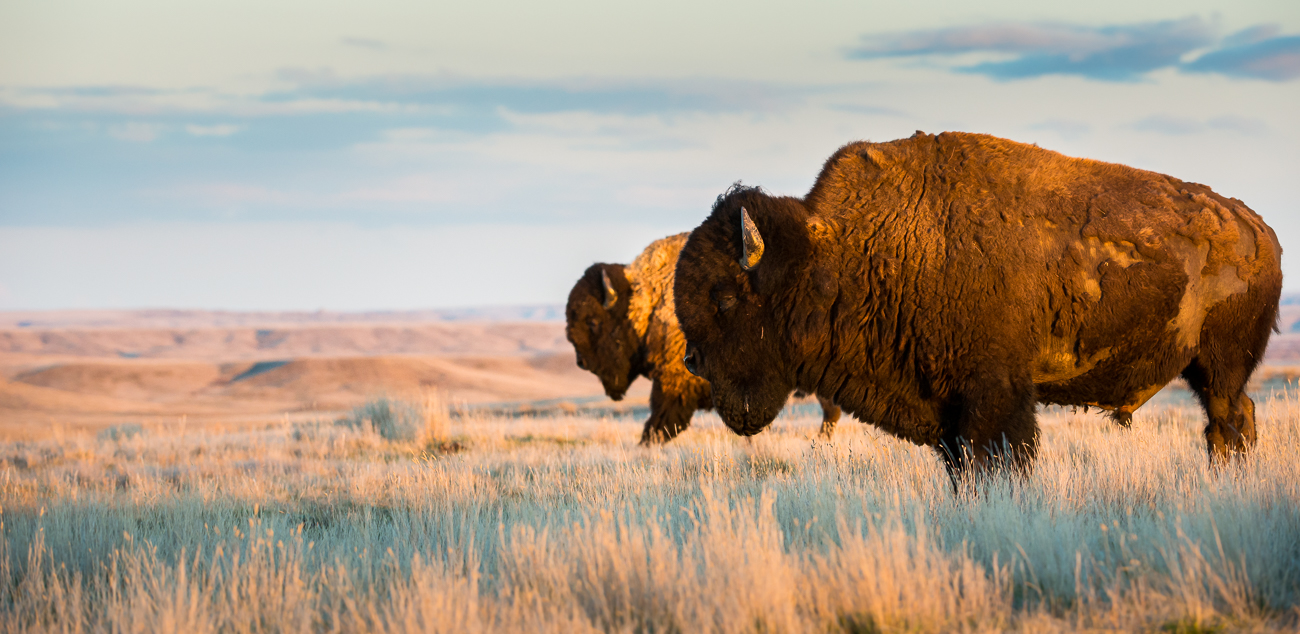 But what we fear losing has, for the most part, not yet disappeared. We still have time. And what we have lost in specific ecosystems – entire regions even – can still return to the landscape.
But what we fear losing has, for the most part, not yet disappeared. We still have time. And what we have lost in specific ecosystems – entire regions even – can still return to the landscape.
How so?
Well, if you want to talk about transformative change, how about returning bison to their natural home, not just on the prairies, but even in places like Canada’s Rocky Mountains; in places like Banff National Park?
Harvey Locke tells us “studies were done and it turned out the bison had been on the landscape for eleven thousand years. (The bison) clearly belongs here.”
Following on the heels of Yellowstone National Park’s successful reintroduction of the wolf, Harvey explains the scientific community “we’re thinking about (where else to reintroduce) wolves and grizzly bears – what I call inconvenient species – but we weren’t thinking about restoring wild bison.”
To bring back the bison to the Rocky Mountains? Leroy says the idea is akin to Connor McDavid being traded to the Toronto Maple Leafs at the trade deadline. Or, as Leroy says, “wherever it is reintroduced, it’s almost bringing in that superstar into the environment.”
That potential is why Harvey believes we shouldn’t just be fighting to save species at risk – we should be actively working to restore species we’ve lost.
“Getting bison fully back as a wild feature in our lives, is to restore harmony and balance with the natural world.”
At one time, 325 bison remained. Today? A half million can be found in pockets of their former range – a remarkable comeback story made all the more remarkable because one of those population pockets now includes Banff National Park.
That’s right: This isn’t a story of loss or one of aspiration; it’s a story of hope.
But the return of the bison to this part of the Canadian Rockies landscape wasn’t magic. A few people dreamt it and worked for it “and now there’s wild buffalo running around inside of Banff National Park, which is pretty cool.”
Harvey Locke is right – it is pretty cool. More than that, Leroy Little Bear says, “it’s kind of like the flowers are starting to bloom again.”
Marie-Eve Marchand is the founder of Bison Belong and was a driving force, along with Leroy and many Indigenous nations, in the reintroduction of bison to the Rockies. And she says, “they’ve been here for thousands of years, and I think they should keep being here.”
Marie-Eve believes that bringing back the bison to Banff is just the start of what’s possible for the bison.
“I think that where the grizzly, the wolf, the elk, the deer roam? I do not see why we can’t have the bison too.”
That this story is only beginning is important, explains Leroy Little Bear.
“When it is present it seems that all the other animals, in fact, all the other plants and so on, all kind of get rejuvenated.”
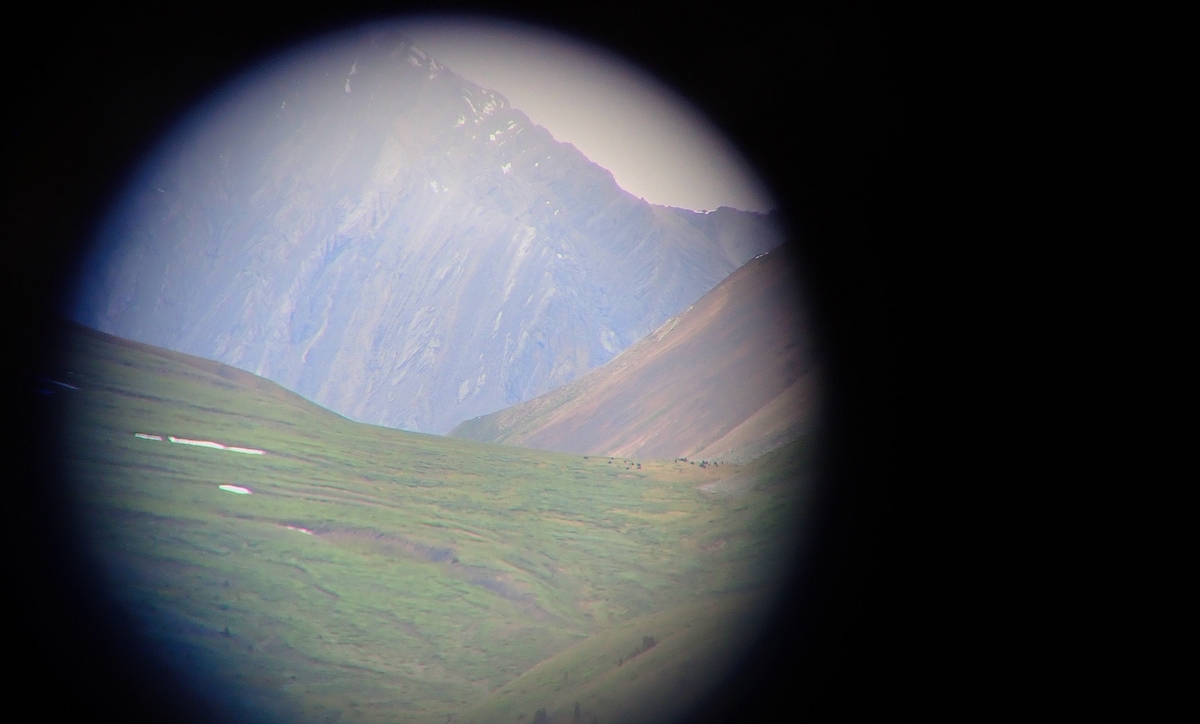
What have bison meant for the Rockies? Well, the animals themselves have already found the bones of their ancestors that disappeared over 100 years ago.
The fur of North America’s largest land mammal is also the second warmest of any animal on the continent. When they shed, birds line their nests with bison fur, which – according to scientists – means that chicks have a 30% greater chance of survival.
Within 15 minutes of the bison’s return to Banff, their fur was being used to help birds and that helps other aspects of the ecosystem as well.
So too does bison dung. Home to 300 different insect species, it creates food for the ecosystem, providing new sources of soil-enriching nitrogen that can aid the return of struggling grasses and plants.
But as Marie-Eve explains, the return of the bison was about more than helping biodiversity.
“It’s food, it’s health, it’s economics, it’s research, it’s relationships, it’s culture, it’s conservation. We need to expand our relationship (with the bison). I think it’s key. It’s the buffalo that will (help guide us) forward with all the First Nations and all the beautiful cultural diversity that it brings.”
After all, reconciling with nature is part of the principals of truth and reconciliation, Indigenous land-use advocate Chloe Dragon-Smith reminds us.
“We can’t reconcile our relationships with peoples if we don’t think about reconciling our relationship with the natural world.”
With bison back where they belong in the Rockies, the cascading effect of positivity hasn’t just been felt across one ecosystem, but across cultures, Leroy Little Bear explains.
“Because the buffalo has been absent from us, all those teachings that they had and showed us? We need to relearn those.”
And that matters. Leroy continues, “the absence of the buffalo really resulted in a lot of stress because now you had to depend on other things that you weren’t familiar with. (Without the bison) it’s almost like restarting a culture with a different base. (Bringing back the bison) was really about bringing about an atmosphere of less cultural stress.”
Harvey Locke summarizes, “the restoration of bison is the righting of a historical wrong. A wrong done to nature and a wrong done to Indigenous peoples and a wrong done to all of us. A wrong to ourselves.”
And that’s why Harvey says this is a story of hope.
“The whole country got buffalo fever associated with the reintroduction of bison into Banff because it was so positive. You felt like we could do something here. This is big and shaggy and inconvenient, and we’re putting it back for all the right reasons and we all feel great about it.”
Harvey Locke’s right, explains Niki Wilson.
“Bison are one of the largest land mammals, so putting a big animal like that in a place where they haven’t been for a while, I think, just those simple facts alone is very captivating for people.”
Niki is a science journalist who covered the return of bison to Banff.
“In real time, I was watching this entire ecosystem, on a very local scale, wake up to what it used to be and I really think most people want that, at least somewhere, or in their life at least somehow. I think we all kind of know on some level, something’s missing.”
And Niki tells us the return of bison was a good news story for a world that desperately needed one. Well, it was good news for an overwhelming majority in Alberta, across Canada and around the world, but for a few citizens, the story wasn’t one of hope. It was one of fear.
Hunters and ranchers were worried about the impact of bringing bison back to the landscape – worried it would change prey behaviour, elevate carnivore numbers and impact livestock operations.
But there was also this: Some feared bison were being prioritized in Banff at the expense of caribou.
Marie-Eve recalls the reaction to the bison reintroduction: “Why would you spend your energy on bison? They’ve already been missing, but the caribou were just wiped out of Banff because of an avalanche.”
Canada’s first and most iconic national park’s caribou were officially listed as extirpated in 2009. Some felt, if any animal should be returned to the landscape, it was caribou.
“But those are two different stories. Actually, it’s not even the same issue”, Marie-Eve argues.
It’s an important point, but the counter is this:
 Around the time bison were being returned to Banff, neighbouring Jasper National Park discovered one of its caribou herds – those living in the famed Maligne Valley – were gone for good and two more un-savable. According to scientists, too few resources meant they simply couldn’t afford to save these herds.
Around the time bison were being returned to Banff, neighbouring Jasper National Park discovered one of its caribou herds – those living in the famed Maligne Valley – were gone for good and two more un-savable. According to scientists, too few resources meant they simply couldn’t afford to save these herds.
Critics decried that Parks Canada had placed too high of a priority on recreation – making money – rather than taking the steps – spending the resources needed – to save their remaining caribou herds. But some grumbled that more resources could have been made available if bison weren’t dominating the discourse.
It’s not fair to suggest that the resources spent reintroducing bison to Banff cost Jasper precious caribou – or that it’s the reason why Banff hasn’t found a way to bring back their caribou, explains Marie-Eve Marchand.
“The question has never been an either/or, and I think that’s very important. But (bison) deserved it and at the moment, at the time, this was the right one to push.”
She’s right. The choice isn’t as easy – or as Machiavellian – as the process that led the NFL to relocate a couple of football teams to Los Angeles. But it is the same economic system, adds political realist and Alberta-based campaign manager, Donn Lovett.
“When it comes down to issues, such as the environment, in an economic climate that we’re in right now, that issue gets pushed away because what comes to the forefront is the economics.”
And if resources are finite – if there is only so much money we can or are willing to spend on protecting species at risk – the question becomes not only what can we afford to save, but if we must choose, what should we save and what should we reintroduce? Should we start with what we fear losing or bring back what we’ve already lost?
In the case of Banff National Park, the reason Parks Canada chose to reintroduce bison before reintroducing caribou was because bison are like suction cups – they stick to new habitats easily, quickly acclimatizing to new surroundings.
Caribou? Unlike their suction cup hooves, they’re the exact opposite of bison: Caribou require more habitat and a near-perfect alignment of circumstances within that range to give a population a sporting chance at recovery.
In a cold, hard math equation, bison won.
But nature – biodiversity – isn’t a math equation and this is about more than percentages.
Bison are considered a keystone species. Caribou, on the other hand, are not – they don’t impact every aspect of the food chain.
Yet caribou might be the most important indicator species in Canada, given the size of their range, helping us understand the health of all life where they live. And because caribou are also an umbrella species, as you know, by saving them, we can also save other life where they’re found, explains Indigenous-led Caribou Patrol’s Stephanie Leonard.
“Maybe the caribou is going to give us the key on how we can change things for the grizzly bear, how we can change things for the mountain goat, for every other species that is struggling right now because of human-caused issues.”
Without the caribou? Stephanie says “there isn’t another animal out there that can take the caribou’s place.”
Environmentally or culturally.
You see, what bison are to the Blackfoot and countless Indigenous nations across the prairies, Caribou are to those who have always called the Boreal and the far north home. Saving the caribou also matters if our goal is reconciliation.
And Caribou Patrol’s Nikita Lattery adds “you can’t just completely give up on a species because I’m sure we wouldn’t just give up on our own either. We always try to help each other; we try to help living beings.”
Dr. Leroy Little Bear agrees.
“Most of us think in very short terms, and we begin to say, well it’s not going to be about me. But it’s certainly going to be about your kids, your children. That’s why it’s important to look at it in that bigger, wider scope of that bigger, wider perspective.”
Biologist Dr. Victoria Lukasik doesn’t disagree, but says it’s time for some real talk.
“Caribou are something that have been studied more than most species. The thing that’s frustrating me is that if you’re going to say (we’re going to save the caribou), let’s do it. But don’t keep placating and saying the words, but not having any action behind it.”
And if we’re not prepared to take proper action, maybe it’s time to make some hard choices, Victoria argues.
“If we don’t accept the loss of any caribou herds, well show me the action because that’s not happening and maybe it would be better if you just said, ‘well, we won’t let these ones go.’”
But Caribou Patrol’s Nikita Lattery says “all caribou matter, even subspecies.”
Ah, yes, subspecies.
Here’s the problem with our current debate on the future of the caribou and so many species at risk of extinction: Too few of us really understand the nuances – like what exactly is a subspecies and why it matters.
Victoria Lukasik tells us, “the main reason we need to classify things and that (subspecies) become an important issue is because of things like our legislation. Well, how can you protect a species if you don’t know what a subspecies is? That’s where this stuff becomes relevant. For the most part, outside of that, it doesn’t really matter what we call it. What’s more important is their role in an ecosystem.”
And as Victoria explains, each subspecies has a unique role in the ecosystem they call home.
“You think about how they evolved over however many thousands of years in that region, because it has a role in that system.”
In other words, subspecies evolve a bit differently from the origin species to better fulfill their ecosystem services in different climates and different landscapes – what’s known as eco-regions. And that’s what allows different eco-regions to play their part in sustaining biodiversity globally.
Many species can claim to have genetically unique subspecies within their ranks, Victoria tells us.
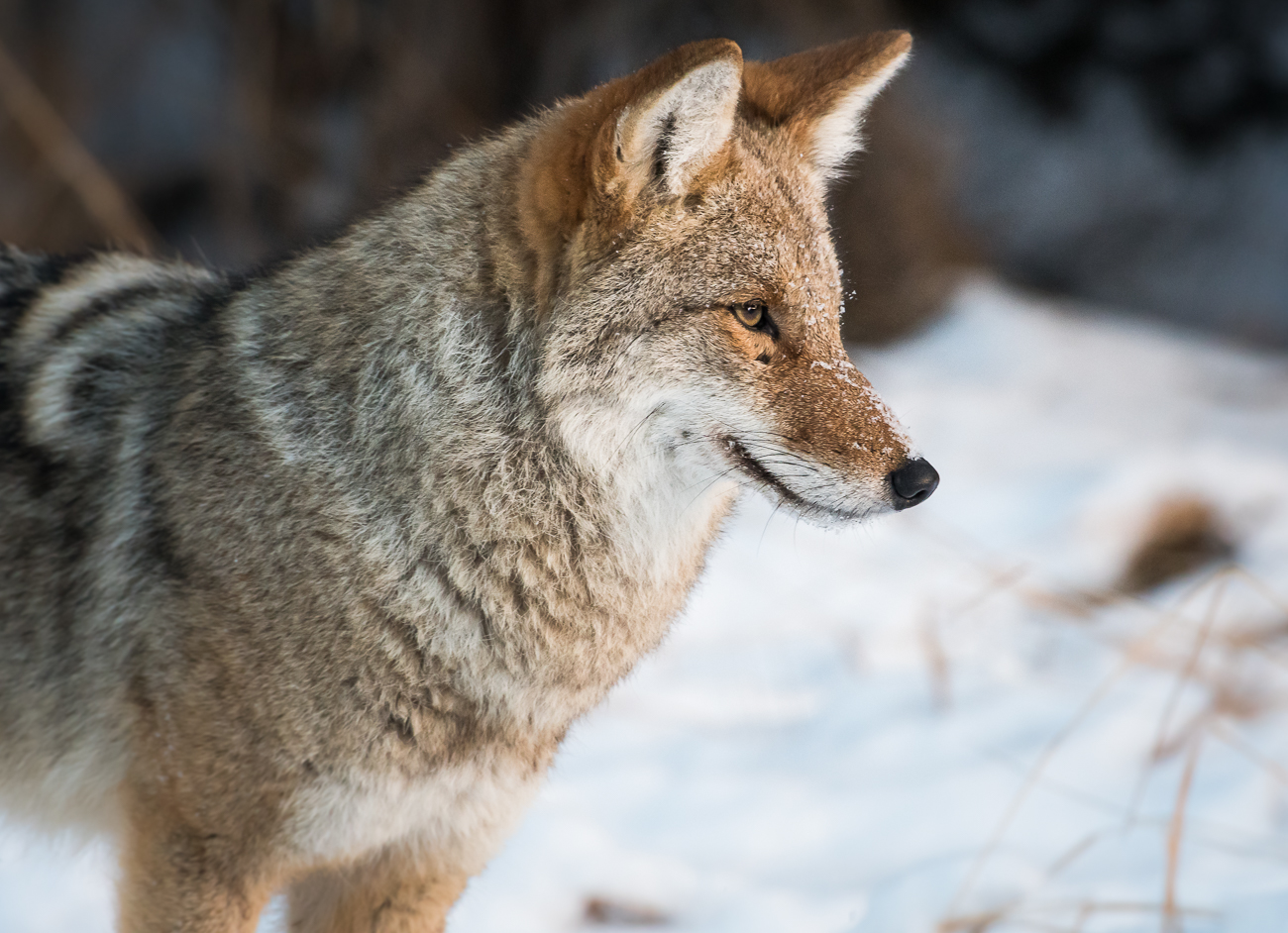 “Nineteen subspecies have been described about coyotes. But for some reason we don’t talk about that. Maybe it’s because we don’t protect coyotes, and if we did, then maybe we would care about subspecies. Whereas for wolves, for caribou, for all these other species, it’s this big, contentious thing.”
“Nineteen subspecies have been described about coyotes. But for some reason we don’t talk about that. Maybe it’s because we don’t protect coyotes, and if we did, then maybe we would care about subspecies. Whereas for wolves, for caribou, for all these other species, it’s this big, contentious thing.”
You can learn more about subspecies here, but when it comes to the caribou, though the entirety of the species is threatened, it’s the mountain caribou subspecies that is of most concern – and specific populations within that subspecies are already going extinct.
“Even though they may be the same species, if you look at southern mountain caribou and northern mountain caribou, they behave very differently.”
Victoria continues, “they’ve taken northern mountain caribou and brought them into the southern mountain caribou range and it didn’t work at all because, even though they are the same species, they behave differently. That’s not usually enough to call them a separate species, but does that mean that they shouldn’t get protected? I don’t think so.”
It’s an interesting question: Does it matter if we lose a subspecies? Should we fortify an entire distinct species – like, say, the plains bison – before worrying about ecosystem-specific caribou herds or even genetically unique, regional subpopulations?
Brian Keating, the former Head of Conservation Outreach at the Calgary Zoo, has had to balance finite resources while spearheading species recovery efforts and he says “we know the caribou of southern BC have now disappeared forever. It is a big deal.”
Others, of course, disagree.
To know who’s right? To make the right decision – in the system we have, with the resources we have? We need to know what we know we don’t know – say, the value of a subspecies – and what we don’t know we don’t know. Like that this decision isn’t just about picking biodiversity’s winners and losers, but also picking between cultures – picking between communities?
 How do we weigh different cultures and different communities against one another?
How do we weigh different cultures and different communities against one another?
And bigger still?
If the very question of what to save – what we decide to save – isn’t just a question of doing right by biodiversity, but also one of advancing reconciliation, what does that mean? Will we – should we – skew our decisions towards solutions that achieve more than one goal? Will this be the best choice for biodiversity? For Reconciliation?
Will we think critically enough – be brave enough – to ask the question and find the answer? And what if the answer is not what we want to hear? What will happen if we must pick between two urgent priorities?
Ethicist Dr. Kerry Bowman says, “it’s very tough. It’s very tough indeed.
“And one of the things I’ve seen in Africa is, you know, people have said: ‘You cut down all your forest to make progress. Look at Europe; look at Britain. Britain used to be forested! Scotland was forested! Now you have nothing. And you’re telling us we can’t do this? That we’re not allowed? That this is wrong for us to (develop our natural resources)? You did it so that you can move forward. So, how can you say we can’t do it? Why can you do that (develop resources and have economic progress) and why should we do this (protect our landscape) when I’m living in a state of poverty?’ And I don’t have a good answer for that. I don’t. I’m struggling with these things.”
If we’re not prepared for these questions – this possible collision – we won’t know what to do when it happens.
And then everyone loses.
Kerry Bowman tells us “I think all we can do – and without being preachy – is to raise people’s awareness as to how we all need forests if we’re really going to survive as a species, because the environmental situation is getting that serious.”
This is why we need to know what we don’t know and what we don’t want to know. This is why we need to ask the better questions, always and relentlessly.
Look, no matter where you stand on this issue – no matter how you feel about the opinions of those voiced in this story – we must remember that everyone is entitled to their perspective, their grievances and their fears. Minority views need to be heard. Majority views aren’t irrelevant. Rural views matter, just as urban views do, too. We don’t have to agree with those we disagree with, but we must learn to live with those who have differing opinions from our own.
And though it’s tempting to go with the solution that solves the most problems at once, former Alberta cabinet minister Donna Kennedy-Glans reminds us: “If you’re going to come up with solutions about how to make your parks better, it means you have to really understand the detail and the complexity and the options. If you take one option off the table, what does that mean for something else?”
As an example, ethicist Kerry Bowman says, “the risk with community involvement is that the voices of non-human life are not there either. So, we always have to be very careful because communities could say, well, do this or do that. You’re still not factoring in this multitude of species and biodiversity and the whole web of life.”
Also understand this, says Northern Development’s CEO Joel McKay: “The policy, frameworks and structures we use to order our country are not conducive to rural (communities). In order to bridge that challenge, we must have a hard look at how we structure everything.”
And then there’s this, says journalist Salimah Ebrahim: “Our political leadership, First Nations political leadership? It is very complicated and they sometimes represent us and they sometimes don’t represent us.”
Donna Kennedy-Glans tells us it’s for this reason she believes “the issue of whose decision is this to make, I think, is one of the most profound conversations we still need to have.”
You see, sometimes when we wish and hope for something to be true, we gloss over hard truths. And when we do that? Win-wins suddenly become lose-lose scenarios. Sometimes people don’t get heard. Sometimes resentment builds or species disappear and then?
“Every action has a reaction,” pollster Shachi Kurl concludes.
So, yes, sometimes we need to have the brutal conversation out loud – even if unpleasant, even if it’s messy. Only when we truly understand how everyone feels – what everyone thinks – will we find the better answers we’ve all overlooked.
Task
Get together in small groups and discuss the following:
What do you think?
Terms & Concepts
Referenced Resources
* Quotes have been edited for brevity and clarity.



